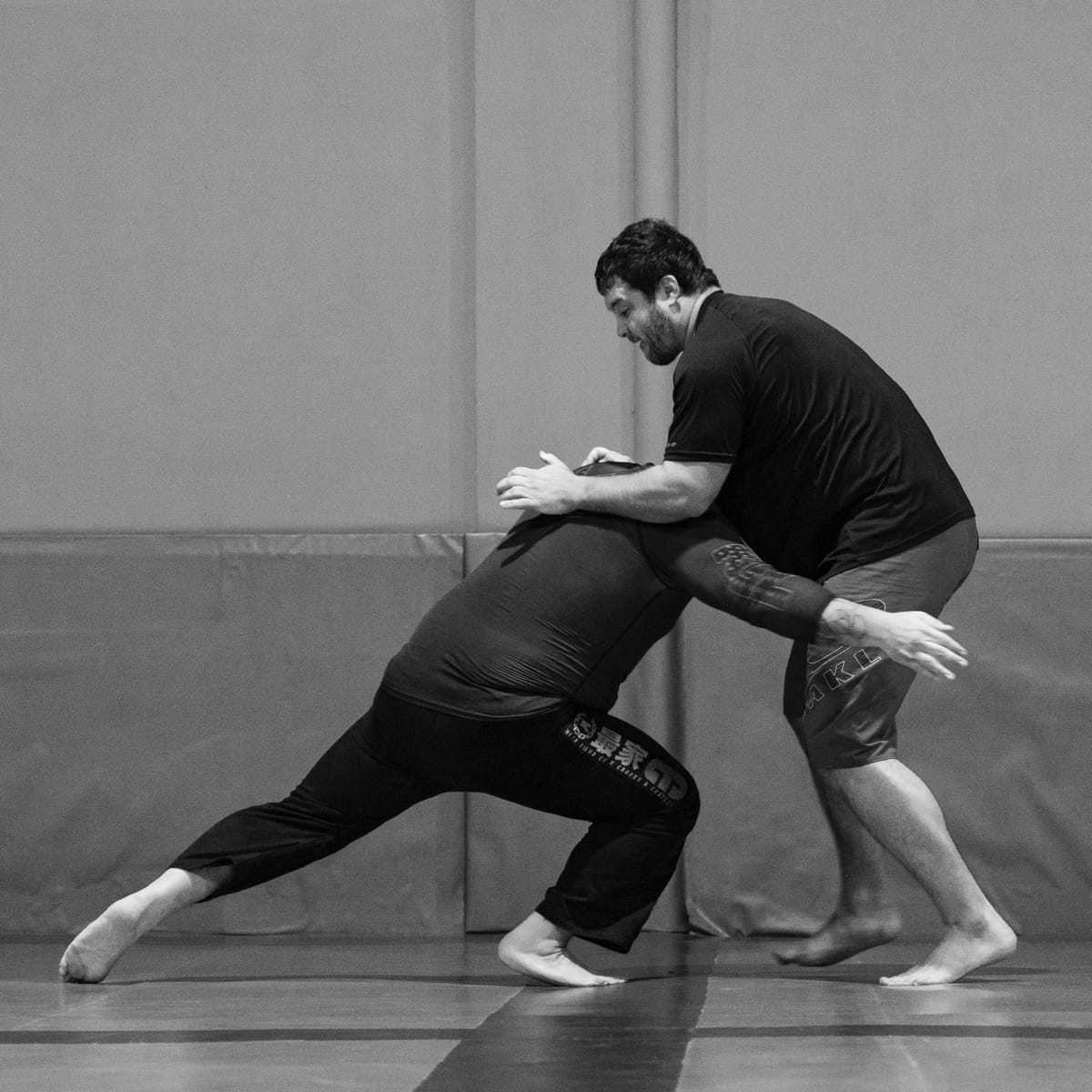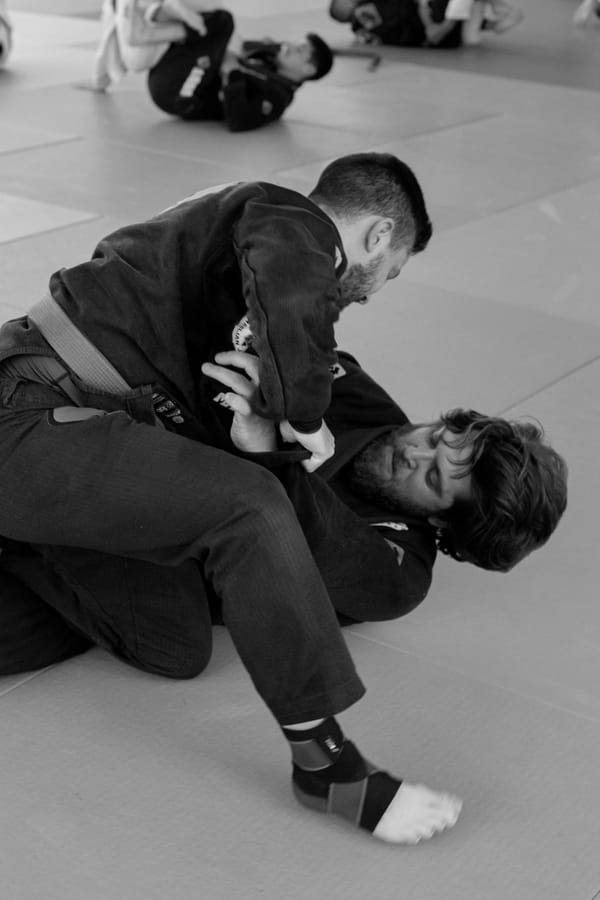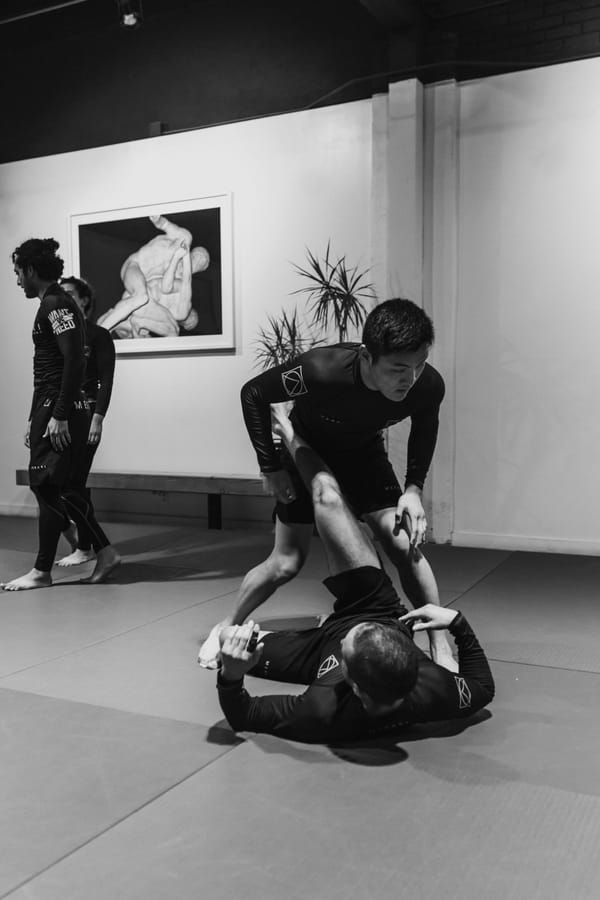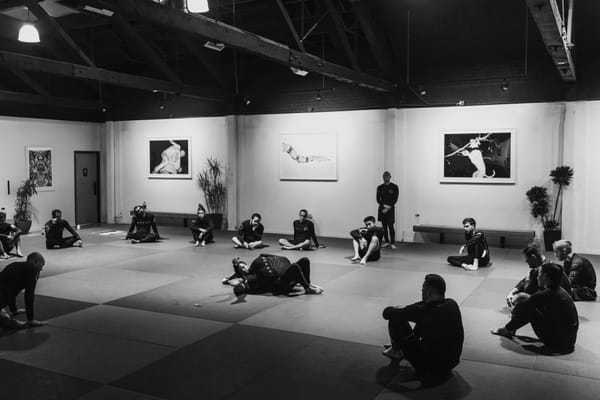Passing the guard

We are on month two of running classes. In January I focused on open guard from the bottom players position. In almost every class we played the games related to making connections from the bottom to your opponent, and using those connections to destabilise them to their hands or to their bum. These games are from Greg's foundations class video on YouTube, but also listed here (a good website for Constraint Led Approach style games). In the classes I would also show a few traditional sweeps after playing a few rounds of the games. The sweep I mostly showed was the tripod sweep, so the students saw it 3 or 4 times over the month. I did not want to get into complicated guards (reverse DLR or single leg X), even if they can be very effective. Maybe as the general level of the students increases, I'll find a way to introduce these systems through CLA games, or show directly with traditional demonstrations.
This month we are going to focus on passing the guard and I needed to think about how I could teach this from an ecological standpoint. The most important thing to do in passing, in my opinion, is to clear the knee line of your opponent, and to control their head with chest to chest connection. If I have achieved those two things, I consider myself to have passed. It does not matter if I am still in half guard, or the lock down, or whatever, as long as I advanced my position to here, and do not allow them to regress my position, by getting a knee between me and them for example, or by breaking my head control or chest to chest connection, then I will eventually pass to side control or mount.
I decided to run games that worked backwards from the point of most control, to the point of least control for the top player.
The Games
Game 1
Top Player:
- Position: In half guard of the bottom player, with head control (far side underhook), chest to chest with bottom players back flat on the mat.
- Objective: Free the leg from half guard.
- Constraint: At no point can you voluntarily let go of head control or chest to chest contact.
- Win Condition: Pass to side control or mount.
Bottom Player:
- Position: In half guard.
- Objective: Get a knee between yourself and the top player.
- Task focus: Break chest to chest connection to create space.
- Constraint: None.
- Win condition: Get to knee shield, full guard or open guard (or reverse position or stand up).
Game 2
Top Player:
- Position: In half guard of the bottom player, but bottom player has knee in between the top player and themselves (knee shield).
- Objective: Get chest to chest connection without a knee in between top and bottom player.
- Task focus: Clear the knee shield.
- Constraint: No standing.
- Win condition: Get chest to chest connection and head control and having cleared the knee line (knee-shield).
Bottom Player:
- Position: In half guard with knee shield.
- Objective: Don't allow the opponent to advance their position.
- Constraint: None.
- Win condition: Return to full guard or open guard (or reverse position or stand up).
Game 3
Top Player:
- Position: Standing in headquarters position. (Visual demonstration of this)
- Objective: Get chest to chest connection without a knee in between top and bottom player.
- Constraint: None.
- Win condition: Get chest to chest connection and head control and having cleared the knee line, side control or half guard without the knee shield.
Bottom Player:
- Position: In open guard.
- Objective: Don't allow the opponent to advance their position.
- Constraint: No sweeping.
- Win condition: None.
Class report
In the end I did not run Game 3. I opted to play inside foot position game which I've written about previously, focusing on getting to the headquarters position for the top player.
I opened with a new game in the standing position which I found from this ecological coaches account:
This was the first class where I did not demonstrate any technique. We did have a 10 minute warm up, in which I asked the group to solo drill break falls. I did this because last week I had a student who was afraid of falling and I promised them we would go through correct break fall technique to help them overcome that fear. I will probably continue to do that so they can develop their confidence. The following 50 minutes was games, games, games.
Here are a few videos from the class:
Knee touch game
Game 1: Keeping chest connection and freeing the leg from half guard
Dominating inside position game
Final Thoughts
I have noticed that people are laughing a lot during class. One could assume they are laughing because they are having fun. This is something I have not experienced often in grappling, or at least I never noticed it in classes I have taken around the world in my 15 years of training. Usually it's concentrated and serious drilling. I even have black belt friends who's pet peeve is someone talking to them while they're drilling, "I'm here to train a serious martial art, shut up and drill silently."
It might not be because of the CLA games. The core group of students are around 6 people, 3 male and 3 female, and mostly complete beginners. I notice that even when doing traditional drilling, women would laugh a lot. While they were drilling a sweep, when they fell over, they would break out into fits of giggles. At first, the men would be silently drilling the martial art they're going to use to fuck up that bully that haunts their past, maybe grunting a bit from effort, but then they'd hear these other students giggling and I could see them relaxing a bit and loosening up. Whatever the catalyst for it, the games, the female influence or my coaching style, people are laughing a lot in class and I'm happy with it. I do not want a room full of people seriously and silently dedicating themselves to the serious activity of hugging another human until they submit. Which is not to say we should not pursue our hobbies seriously, but we can do so while having fun.
I have recently finished How We Learn To Move by Rob Gray and intend to write a summary of it, what I found most interesting and nascent thoughts on how to apply it to grappling.


